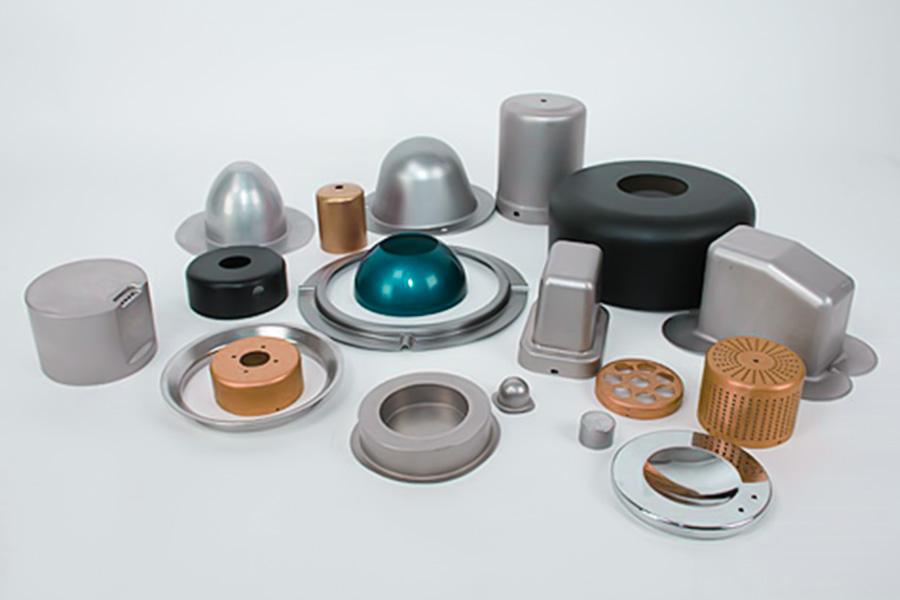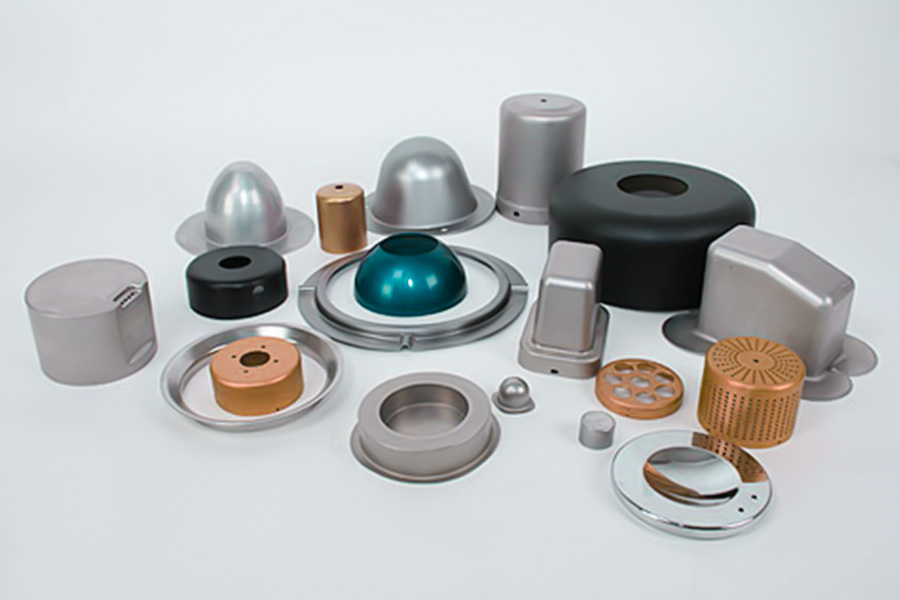As a cutting-edge metal shaping technology,hydroforming has been used in many industries such as aerospace, automobile manufacturing, and electrical instrumentation due to its significant advantages in manufacturing components with complex shapes, improving material usage efficiency, and reducing production costs. has been widely used. At present, with the development of science and technology, hydroforming technology has become one of the hot spots of research at home and abroad. Hydroforming technology uses liquid pressure to replace the rigid punch or die for plastic processing of the workpiece, which allows the workpiece to plastically deform under the influence of the liquid medium to obtain the required shape and size.
With the development of science and technology, people are paying more and more attention to the deformation behavior of materials during hydroforming. In the manufacturing process, the selection of materials is particularly critical. It not only affects the quality and performance of molded parts, but is also directly related to the cost and efficiency of production. Therefore, studying different types of materials is of great significance to the hydroforming process and product quality. The purpose of this article is to examine the variousmaterials used in the hydroforming process?
What is hydroforming?
Hydroforming is a cost-effective and professional mold-forming metal fabrication and forming process that uses high-pressure hydraulic oil to form metals such as steel, stainless steel, carbon, copper, aluminum and brass into lightweight, strong and structurally sound parts. Almost any metal that can be cold formed can be hydroformed.Hydroforming can form complex shapeswith concave surfaces that would be difficult to achieve with standard one-piece die stamping.
One of the largestapplications for hydroformingis in the automotive industry, which requires complex shapes that are lighter, stronger, and stronger.
This process is also often used to form aluminum tubes for bicycle frames. Other advantages of parts manufactured via hydroforming include seamless bonding and increased part strength. They also maintain a high quality and less grainy surface for easier metal finishing.
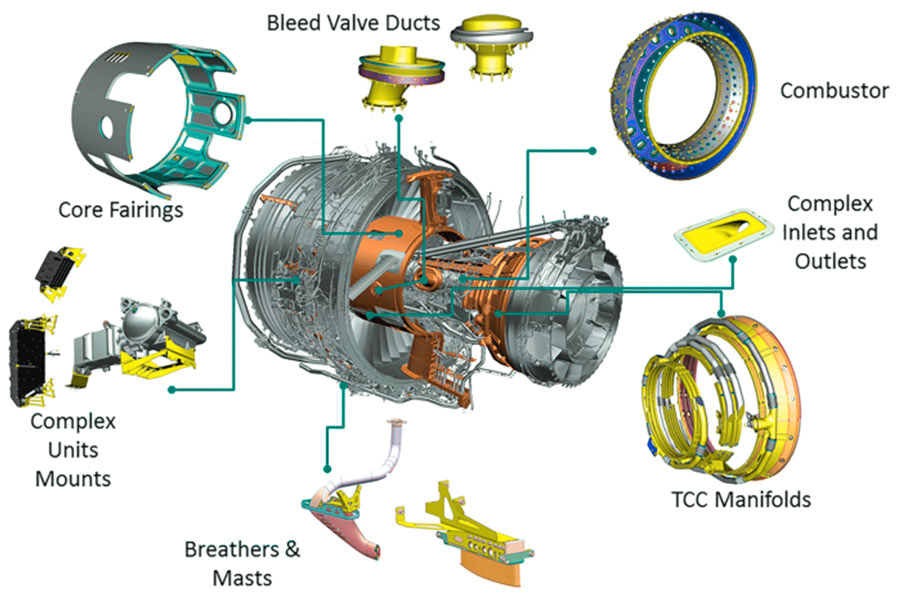
What Are the Steps in the Hydroforming Process?
Thehydroforming processis an advanced metal forming technology that is widely used in many fields such as automobiles, aerospace, and home appliances. The following are the mainsteps of the hydroforming process:
| Process | Description |
| Material preparation |
|
| Mold installation and debugging |
Install the designed mold on the hydroforming machine and debug it to ensure the accuracy and stability of the mold, as well as the good cooperation between the mold and thehydroforming machine. |
| Material placement and positioning | Place the pretreated material in the mold and accurately position it to ensure that the material can be evenly stressed and fit the mold during the forming process. |
| Hydraulic pressurization and forming | Inject liquid into the mold and gradually increase the pressure of the liquid to make the material plastically deform in the mold until it reaches the desired shape and size. |
| Pressure relief and demoulding | After the forming is completed, gradually reduce the pressure of the liquid and remove the formed part from the mold. |
|
Subsequent processing |
Perform necessary subsequent processing on the formed part, such as trimming, deburring, surface treatment, etc., to meet the requirements of the final product. |
What Materials Are Used in hydroforming?
In the hydroforming process, material selection is crucial because different materials have different physical and chemical properties, which will directly affect the quality, performance and application range of the formed parts. The following are several materials commonly used in hydroforming:
1.Stainless steel
Stainless steel is known for its excellent corrosion resistance and strength. It can operate stably for a long time in harsh working environments while maintaining good mechanical properties. Due to these properties of stainless steel, it is often used in the automotive and aerospace industries to manufacture various valves, pipes, connections and structural parts.
2.Aluminum
Aluminum is a lightweight metalwith good ductility and plasticity. At the same time, it has high specific strength, good thermal conductivity, and is easy to recycle. Aluminum's lightweight properties make it ideal for applications such as bicycle frames and automotive parts. In addition, aluminum is also widely used in construction, furniture, art and other fields.
4.Titanium
Titanium is a strong and lightweight metalwith good corrosion and heat resistance. Its elastic modulus is low, but its strength is high and it can withstand large deformations without becoming unstable. Due to these excellent properties of titanium, it is often used in aerospace and high-performance applications, such as aircraft engine blades, rocket casings, etc. In addition, titanium is also used in medical equipment, electronic equipment and other fields.
5.Brass
Brass is an alloy of copperand zinc that has good ductility and plasticity. It also has some corrosion resistance and wear resistance. Brass is commonly used to make decorative and industrial components such as faucets, valves, pipe fittings, etc. In addition, brass is also used to make precision instruments such as musical instruments and clocks.
What Liquid Is Used in Hydroforming?
The mainliquids used in hydroformingare as follows:
1. Water
Water is one of the most common hydroforming media, especially in situations where material performance requirements are not particularly high. Pure water as a medium has the advantages of low cost, environmental protection and no pollution. In addition, water has low compressibility and can transmit higher pressure, making it suitable for some molding processes with higher pressure requirements. However, it should be noted that water may freeze at low temperatures, affecting the normal operation of the hydraulic system, so insulation measures are required when used in cold areas or winter.
2. Hydraulic oil
Hydraulic oil is another commonly used hydroforming medium. Compared with pure water, hydraulic oil has better lubricity and anti-wear properties, which can reduce friction and wear between the mold and the workpiece, and improve the quality and accuracy of the molded parts. At the same time, hydraulic oil also has good sealing and oxidation resistance, which can ensure the stable operation of the hydraulic system. However, the cost of hydraulic oil is relatively high and requires regular replacement and maintenance, which increases production costs.
3. Emulsion
Emulsion is a liquid medium composed of water and oil mixed in a certain proportion. Emulsion combines the advantages of water and oil. It has the low cost and environmental protection of water and the lubricity and anti-wear properties of oil. Therefore, emulsions are widely used in situations that require high material performance and molding accuracy. However, it should be noted that the emulsion has poor stability and is prone to delamination or deterioration during use, so it needs to be tested and replaced regularly.
What Applications Use Hydroforming Materials?
Hydroforming materialsare popular for their excellent properties and wide range of applications. The following are some of the main application areas where hydroforming materials are used:
1. Automobile industry
Hydroforming technology is widely used in the automotive industry, especially in the manufacture of vehicle body parts and chassis components. For example, car body parts such as doors, roofs, and hoods, as well as chassis parts such as frame rails, rear axle beams, and bumpers, can all be manufactured through hydroforming technology. This technology can not only improve the strength and stiffness of parts, but also enable lightweight design and reduce vehicle fuel consumption and emissions.
2. Aerospace industry
In the aerospace field, hydroforming technology also plays an important role. Because aerospace equipment requires extremely high weight, strength and precision of parts, traditional manufacturing methods often have difficulty meeting these requirements. Hydroforming technology can produce parts with complex shapes, precise dimensions and high strength, such as aircraft landing gear, wing spars, fuel tanks, etc. These parts not only provide excellent performance, but also meet the lightweight needs of aerospace equipment.
3. Bicycle industry
In the bicycle industry, hydroforming technology is also widely used. The bicycle frame is an important part of the bicycle, and its performance directly affects the riding experience and safety of the bicycle. The frame manufactured through hydroforming technology not only has higher strength and rigidity, but also achieves lightweight design, improving the comfort and durability of the bicycle. In addition, hydroforming technology can also be used to manufacture other parts of bicycles, such as wheels, brake systems, etc.
4. Industrial sector
In the industrial sector, hydroforming technology also has a wide range of applications. For example, when manufacturing pipe fittings, pressure vessels, storage tanks and other equipment, hydroforming technology can ensure that parts have precise dimensions, complex shapes and high strength. In addition, hydroforming technology can also be used to manufacture a variety of customized sheet metal parts and metal products to meet the needs of different industries.
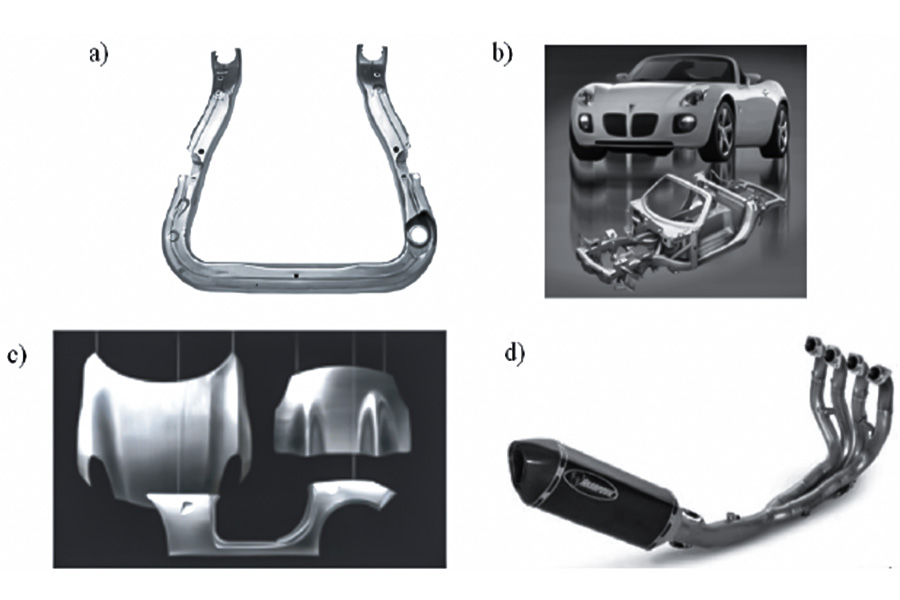
FAQs
1.What liquid is used in hydroforming?
The liquids used in hydroforming mainly include water, hydraulic oil and emulsion.Water: As a medium, pure water has the advantages of low cost, environmental protection and no pollution. It is a commonly used medium for shell hydroforming. However, it should be noted that water may freeze at low temperatures, affecting the normal operation of the hydraulic system, so insulation measures are required when used in cold areas or winter. Hydraulic oil: It has good lubricity and anti-wear properties, which can reduce friction and wear between the mold and the workpiece, and improve the quality and accuracy of the molded parts. At the same time, hydraulic oil also has good sealing and oxidation resistance, which can ensure the stable operation of the hydraulic system. However, the cost of hydraulic oil is relatively high and requires regular replacement and maintenance. Emulsion: A liquid medium made of water and oil mixed in a certain proportion. It combines the advantages of water and oil. It has the low cost and environmental protection of water and the lubricity and anti-wear properties of oil. Emulsion is suitable for some occasions that require high material performance and molding accuracy.
2.What materials are used in metal tubing?
In hydroforming, commonly used materials for metal pipes include mild steel, stainless steel, aluminum alloys, copper alloys, titanium alloys, low-alloy high-strength steels and nickel-based alloys. The choice of these materials depends on the specific application scenario, performance requirements and cost considerations. For example, in the automotive industry, in order to improve the rigidity and safety of the car body, materials such as high-strength steel or magnesium alloys may be selected; while in the aerospace field, titanium alloys with higher strength and lower density may need to be selected. Material.
3.What is hydroforming metal?
Hydroformed metal refers to metal parts or components processed through hydroforming technology.Hydroforming is an advanced metal forming processthat uses the pressure transmission characteristics of liquid to plastically deform metal in the mold, thereby manufacturing parts with complex shapes and high precision. This technology has the advantages of low mold cost, short mold manufacturing cycle, high forming limit, and high forming quality. It is an important technology in the field of metal forming.
4.What are the different types of hydroforming?
Hydroforming is mainly divided into two types according to the blanks used and process characteristics: Pipe hydroforming: using pipes as raw materials, applying liquid pressure to the tube cavity and applying load in the axial direction, so that it can Plastic deformation occurs in the mold cavity, and the tube wall fits the inner surface of the mold, thereby obtaining the forming technology of the required shape part. Plate hydroforming: A plate forming method that uses liquid as a force transmission medium to transmit load and form the plate onto a single-sided mold. According to the difference between the liquid medium replacing the concave mold or the punch, it can be further divided into liquid-filled drawing (using the liquid medium to replace the concave mold) and liquid punch drawing (using the liquid medium as the punch).
Summary
In the hydroforming process, a wide variety of materials are used, and the choice of which material is based on its specific application environment, performance requirements and cost considerations. With the continuous development of science and technology and the progress of the entire industry,hydroforming technology may introduce more innovative materialsin the future to meet more complex and diverse product needs. Therefore, for professionals engaged in hydroforming technology, in-depth understanding and proficiency in the characteristics and application fields of various materials have become a crucial factor in ensuring product quality and improving production efficiency.
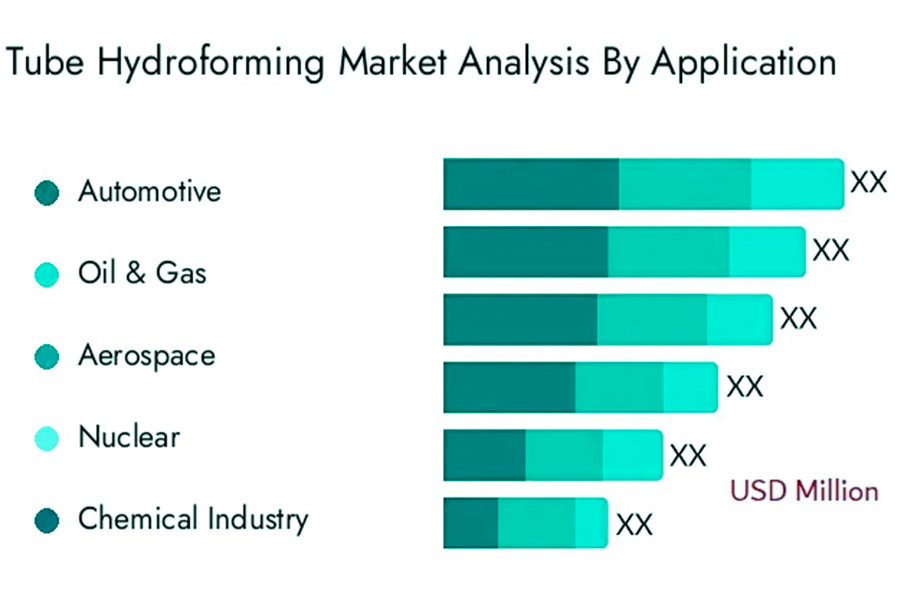
Disclaimer
The content on this page is for reference only.LSdoes not make any express or implied representation or warranty as to the accuracy, completeness or validity of the information. No performance parameters, geometric tolerances, specific design features, material quality and type or workmanship should be inferred as to what a third party supplier or manufacturer will deliver through the Longsheng Network. It is the responsibility of the buyerseeking a quote for partsto determine the specific requirements for those parts.Pleasecontact usfor moreinformation.
LS Team
LS is an industry-leading companyspecializing in custom manufacturing solutions. With over 20 years of experience serving more than 5,000 clients, we focus on high-precisionCNC machining,sheet metal fabrication,3D printing,injection molding,metal stamping,and other one-stop manufacturing services.
Our factory is equipped with more than 100 advanced 5-axis machining centers and is ISO 9001:2015 certified. We provide fast, efficient, and high-quality manufacturing solutions to customers in over 150 countries worldwide. Whether it’s low-volume production or large-scale customization, we can meet your needs with delivery as fast as 24 hours. ChoosingLS Technologymeans choosing efficiency, quality, and professionalism.
To learn more, please visit our website:www.lsrpf.com


